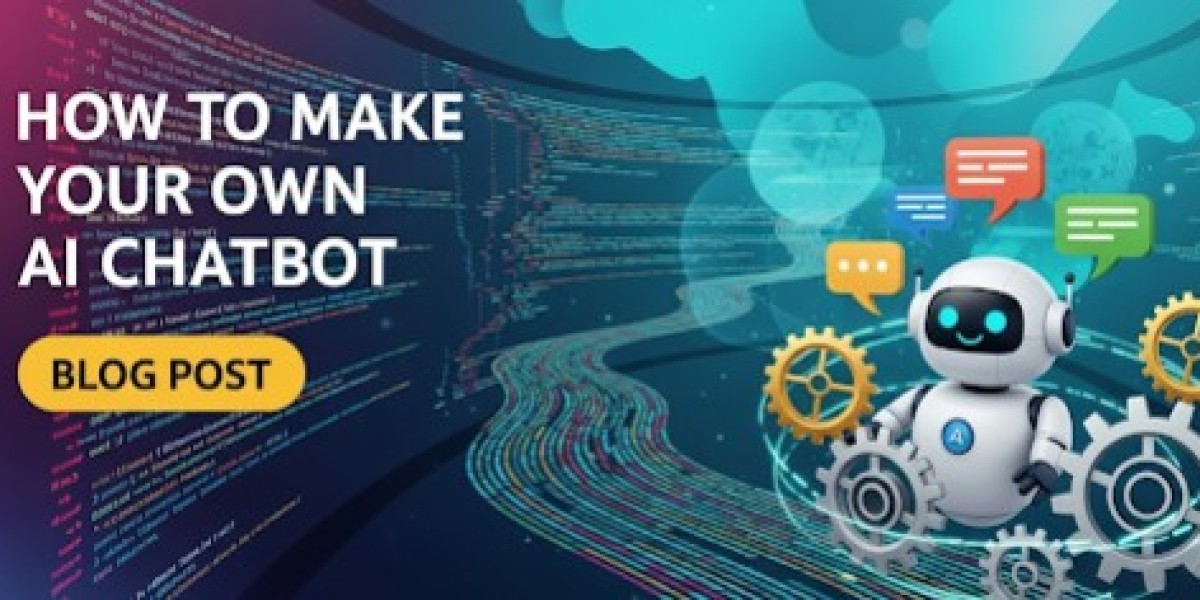AI chatbots have become powerful tools for businesses, developers, and hobbyists. They can automate customer support, guide users through websites, or even provide entertainment. Learning how to make your own AI chatbot is not only achievable but also an exciting way to engage with cutting-edge technology. Whether you’re a beginner with no coding experience or a seasoned developer, this guide will walk you through the process of creating your own AI chatbot, covering both no-code and coding approaches. We’ll explore each step in detail, ensuring you have the knowledge to build a chatbot that meets your needs.
What Are AI Chatbots?
Before we dive into how to make your own AI chatbot, let’s clarify what an AI chatbot is. An AI chatbot is a software application that uses artificial intelligence to simulate human-like conversations. Unlike traditional chatbots that rely on rigid scripts, AI chatbots leverage natural language processing (NLP) and machine learning (ML) to understand user queries and generate dynamic responses. This makes them versatile for tasks like answering FAQs, processing orders, or even engaging in casual conversation.
There are three main types of chatbots:
Rule-based chatbots: These follow predefined rules and decision trees, making them simple but limited in flexibility.
Retrieval-based chatbots: These select responses from a database based on user input, offering more versatility than rule-based bots.
Generative AI chatbots: Powered by large language models (LLMs) like GPT, these generate responses on the fly, handling a wide range of queries with human-like fluency.
AI chatbots are increasingly accessible, thanks to user-friendly platforms and open-source tools. As a result, anyone can learn how to make their own AI chatbot, regardless of their technical background.
Step 1: Define Your Chatbot’s Purpose and Platform
The first step in how to make your own AI chatbot is to define its purpose. What do you want it to do? Here are some common use cases:
Customer support: Answer FAQs, troubleshoot issues, or guide users through a website.
E-commerce: Help customers find products, track orders, or recover abandoned carts.
Entertainment: Engage users with fun conversations or games, such as a chatbot for an 18+ AI chat platform designed for adult audiences with age-restricted content.
Once you’ve identified the purpose, decide where your chatbot will operate. Common platforms include:
Websites
Social media (e.g., Facebook Messenger, Instagram)
Messaging apps (e.g., WhatsApp, Telegram)
Internal tools (e.g., Slack for workplace communication)
Choosing the right platform ensures your chatbot reaches its intended audience. For example, a website chatbot might be ideal for an e-commerce store, while a Telegram bot could suit a community-driven project.
Finally, select the tools or technology stack for building your chatbot. No-code platforms like Tidio, Zapier, or Sendbird are great for beginners, while coding frameworks like Google’s Dialogflow, IBM Watson, or Python libraries (e.g., TensorFlow, PyTorch) offer more control for developers.
Step 2: Building a Chatbot with No-Code Platforms
For those new to AI or lacking coding skills, no-code platforms make it easy to learn how to make your own AI chatbot. These platforms provide intuitive interfaces, drag-and-drop editors, and pre-built templates. Let’s use Tidio as an example to walk through the process, as it’s a popular choice with a free plan for up to 100 users per month.
Steps to Build a Chatbot with Tidio
Define the purpose: Identify your chatbot’s goals, such as answering customer queries or guiding users through a purchase process.
Choose the platform: Decide where your chatbot will appear, such as your website or social media channels. Tidio supports integrations with platforms like WordPress and Shopify.
Select Tidio as your tool: Sign up for Tidio’s free plan and access its chatbot builder.
Design the conversation flow: Use Tidio’s drag-and-drop editor to create a conversation flow. Set triggers (e.g., when a visitor lands on a specific page), add messages, and include decision nodes or actions like saving email addresses. For example, if a user asks about product availability, the chatbot can respond with stock details or redirect to a product page.
Test the chatbot: Use Tidio’s “Test it out” feature to preview the conversation flow and fix any issues.
Train with NLP: For advanced functionality, train your chatbot with natural language processing by adding common phrases users might say, like “Where’s my order?” or “What’s your return policy?”
Collect feedback: Tidio offers automatic customer satisfaction surveys, which can achieve up to a 90% response rate, helping you assess your chatbot’s performance.
Monitor analytics: Track user interactions and drop-off rates using Tidio’s analytics dashboard to identify areas for improvement.
Other26% of businesses will rely on AI chatbots for customer service by 2027, according to Gartner, highlighting their growing importance. No-code platforms like Tidio make it accessible for anyone to learn how to make their own AI chatbot, democratizing this powerful technology.
Other no-code platforms, such as Zapier and Sendbird, offer similar features. Zapier excels at integrating with thousands of apps for automation, while Sendbird provides robust customization options for businesses. These platforms make it possible to create a chatbot in as little as 30 minutes, even for those new to the process.
Step 3: Building a Chatbot from Scratch
For those with programming skills, building an AI chatbot from scratch offers unparalleled flexibility. This approach allows you to customize every aspect of the chatbot, from its logic to its user interface. Here’s how to make your own AI chatbot using a technical approach, based on best practices from industry experts.
Steps to Build a Chatbot from Scratch
Define the use case: Be specific about your chatbot’s purpose, such as automating customer support or providing personalized recommendations. For instance, Adult AI chatbots, designed for mature content or services, require careful content moderation and compliance with legal standards.
Select the channel: Choose where your chatbot will be deployed, such as a website, mobile app, or messaging platform like WhatsApp or Telegram.
Choose a tech stack: Select tools like:
NLP tools: Amazon Lex, Google Dialogflow, IBM Watson Assistant, or Microsoft Bot Framework.
Cloud services: AWS, Microsoft Azure, or Google Cloud for hosting and scalability.
AI/ML libraries: PyTorch, TensorFlow, Scikit-learn, Langchain, or LLamaIndex for building and training models.
Build a knowledge base: Gather data from internal sources (e.g., FAQs, CRM data) or public datasets (e.g., Stanford Question Answering Dataset on Kaggle). Clean and normalize the data for accuracy.
Design the conversation: For simple bots, use decision trees. For advanced bots, train machine learning models like GPT, BERT, or T5 to understand user intents and generate human-like responses using prompt engineering.
Integrate and test: Use APIs to integrate your chatbot with the chosen platform, ensuring secure keys and data synchronization. Design a user-friendly interface, such as a floating chat icon, and conduct functional and performance testing. Run a pilot program to identify issues and implement security measures to comply with regulations like GDPR.
Launch and monitor: Deploy your chatbot and use monitoring tools to track response time, resolution rate, and user satisfaction. Continuously update the training data and fine-tune the model.
As someone who has explored how to make your own AI chatbot, I’ve created a Candy AI clone. This project allowed me to experiment with conversational AI and understand its potential for various applications, from customer service to niche entertainment platforms.
Here’s a simple Python example to illustrate how to make your own AI chatbot using a basic NLP model:
import nltk
from nltk.chat.util import Chat, reflections
# Define conversation pairs
pairs = [
[
r"hi|hello|hey",
["Hello! How can I assist you today?", "Hi there! What's on your mind?"]
],
[
r"what is your name",
["I'm Grok, your friendly AI chatbot!"]
],
[
r"quit|exit|bye",
["Goodbye! Come back anytime."]
]
]
# Create the chatbot
chatbot = Chat(pairs, reflections)
# Start the conversation
def start_chatbot():
print("Hi! I'm your chatbot. Type 'quit' to exit.")
while True:
user_input = input("> ")
if user_input.lower() == "quit":
break
response = chatbot.respond(user_input)
print(response)
start_chatbot()
This code uses the NLTK library to create a simple rule-based chatbot. For more advanced functionality, you’d integrate an LLM like GPT or use a framework like Dialogflow.
Step 4: Testing, Training, and Launching Your Chatbot
Whether you use a no-code platform or build from scratch, testing and training are critical to ensure your chatbot performs well. For no-code platforms like Tidio, testing is straightforward with built-in preview tools. For custom-built chatbots, write test cases and use simulation tools to verify functionality.
Training is especially important for chatbots using NLP. Feed them relevant data, such as customer queries or product details, to improve their understanding of user intents. For example, if your chatbot is for an e-commerce site, train it with phrases like “track my order” or “return policy.” Over time, collect real user interactions to refine its performance.
Before launching, ensure your chatbot complies with privacy regulations like GDPR or CCPA, especially if it handles sensitive data. After deployment, monitor analytics to track metrics like response time and user satisfaction. Use feedback to make iterative improvements, ensuring your chatbot remains effective.
Best Practices for a Successful Chatbot
To make your AI chatbot stand out, follow these best practices:
Add a human touch: Use friendly, conversational language to make your chatbot engaging. Research shows 53% of users respond positively to witty bots.
Route complex queries to humans: For issues the chatbot can’t handle, provide a seamless handoff to a live agent. Studies indicate 69% of users prefer bots for simple queries but want human support for complex issues.
Mimic real conversations: Avoid robotic responses by using natural language and context-aware replies.
Avoid dead-ends: If the chatbot doesn’t understand a query, offer alternative options or a human handoff.
Prioritize security: Protect user data with encryption and compliance measures.
Moderate content: For generative AI chatbots, implement filters to prevent inappropriate responses, especially for niche applications.
Integrating your chatbot with tools like CRMs or analytics platforms can enhance its capabilities. For example, connecting to a CRM allows personalized responses based on customer data.
Key Statistics on AI Chatbots
Statistic | Source | Details |
Customer service impact | Gartner | 25% of businesses will rely on AI chatbots for customer service by 2027. |
Faster replies | Zendesk CX Trends Report | 71% of customers feel AI chatbots enable quicker responses. |
Sales boost | Tidio | Chatbots can increase sales by 67%. |
Cost reduction | Tidio | Chatbots can reduce customer service costs by 30%. |
Query resolution | Tidio | Chatbots resolve 69% of customer queries. |
Response rates | Tidio | Quality chatbots achieve 80-90% response rates. |
These statistics highlight the growing importance of learning how to make your own AI chatbot for businesses and individuals alike.
Conclusion
Learning how to make your own AI chatbot is an exciting journey that opens up endless possibilities. Whether you choose a no-code platform like Tidio for simplicity or build from scratch for customization, the key is to start with a clear purpose, design a user-friendly conversation flow, and continuously improve based on user feedback. With tools and technologies more accessible than ever, anyone can create a chatbot that meets their needs. So, why wait? Start building your AI chatbot today and see how it can transform your business or personal projects.








